I’m down on my knees again, like I was an hour ago and the hour before that. Here is a large brick building in the middle of a college campus, in the middle of America. Here is where I teach college students, edit for a literary magazine, research and write. Here is also the third stall of a bathroom on the third floor where I run several times a day to throw up, shaking and sweating, my head spinning with thoughts of cancer or brain disease, thoughts that an asteroid might be heading towards earth, or that my cat was right when she looked at me funny this morning, stretched her paws and told me today was the day I would die.
If I hear someone come in—esteemed professor of this, distinguished writer of that, on rare occasion a student visiting a teacher’s office on the third floor—I try to pause. I try to think really hard, to focus, to hold what little breath I have and bear down on my teeth and tense every muscle in my body. I pull myself in stiff like a reed. It’s not that I don’t want them to know I’m here—it’s that if I don’t hold taut and still, all dread and dead, eyes and mouth pinched shut, I won’t be able to stop heaving and gasping. I won’t be able to function as I should, won’t be able to go about my day smiling and nodding. I won’t be able to keep pretending.
The truth: I’m throwing up because this is what I do lately when I hear the sound of students outside, their voices interrupting one another, or the sounds of planes overhead, of sirens racing up the intersection, the professor in his office next to mine eating lunch, pop of lid, crunch of can, ringing telephone. This is what I do lately when I see the news—floods and famines, chemicals and cancers, children murdering their parents, parents murdering their children, all interrupted by celebrity gossip and lifestyle reports. Lately I’ve been throwing up every time I try to leave the house.
I have generalized anxiety disorder, which means I live a socially stigmatized, ego-inducing, and shattering existence ruled by chronic fear and worry, lack of sleep or bills or work manifesting as constant distress and restlessness, catastrophic paranoia, and strange delusions. Anxiety disorients me from inside. My heart moves so erratically I’m afraid it will give out, my breath so staggered I have to remind myself to take in air. My head burns, feels numb, the skin stretched shining across my skull. I am dizzy and lightheaded, my brain a balloon drifting away from my spine on a thin thread. My skin itches and prickles, as though my frightened limbs are forever waking up or going to sleep, leaving me clumsy and uncoordinated, my hands unable to hold onto objects, my legs unwilling to hold me up, let alone propel me forward. I taste metal and ammonia, burp from swallowing too much air as I gulp for breath, stumble over my clumsy tongue and words, my jaw clicking, grating when I try to speak. My sight is distorted, foggy. My eyes are sensitive to light, spots dotting my vision, lights flashing when I close my eyes. Spiders scurry in the corner of my sight.
I’ve been prescribed anti-anxiety medication, which doctors assure me will take weeks or months to work, but in the meantime I can’t concentrate, can’t remember what happened last year or last month, can’t remember last night. I watch my memory leave like water through a sieve. I clutch at strands of my narrative as it unravels. Yet though I have no memory, I play the same reel again and again, my thoughts on repeat—thoughts of death, decay, destruction, thoughts that people think I am strange, that I am trapped in the room of my life with no way out, that I will make a fool of myself, faint or throw up in public. I feel as if I will simply fold up like sad origami.
While I wait for the medication to build up in my system, I spiral down and down, the world a blur around me. I know I look unreasonable and inconstant. I know I am frightening my friends, my family, my partner. So I try to explain.
At first I insist that what I feel is normal. “My hands and feet have gone to sleep and they won’t wake up,” I say, watching doubt skirt their faces as the days pass. “My tongue is swollen twice its size,” I cry, holding my mouth open for them to see.
When they don’t believe me I insist that I have the right to be frightened. “It’s like I have a thousand acupuncture needles trapped in my skin,” I press. “There’s an electric current running through my fingers, pulsating out of my toes.” Soon I grow frustrated and shout, “I can’t move my mouth because my tongue is growing each day and the place where it meets my throat is a stone and I need to speak to you so badly that it is beginning to taste like salt.”
I try to justify myself, the things I feel and fear. I want to describe them, to name them in a way that others can understand and thereby accept. If they cannot comprehend my pain they will never believe it. Because “it hurts” or “it burns” or “it stings” falls short, I turn to figurative language. Yet the more detail I include, the more listeners wrinkle their noses or widen their eyes. The more I explain, the more incredulous they become.
Perhaps this is because we cannot accurately describe our pain, for pain exists beyond narrative in many ways. In The Body in Pain: The Making and Unmaking of the World, Elaine Scarry reasons that pain is inexpressible by language, for “whatever pain achieves, it achieves in part through its unshareablility, and it ensures this unshareability through its resistance to language.” It is this inability to accurately describe our pain to others, and their inability to understand our suffering that makes pain so powerful, so frightening, so injurious.
We cannot describe our pain to others because pain separates our realities. For those suffering, there is no existence beyond pain—it frames the world. Those not in pain have an alternate reality, separated from the sufferer by way of the body. Sufferers cannot articulate their truths and those without pain cannot begin to comprehend. What exists for those in pain is simply unreal to those without it. As Scarry explains:
For the person in pain, so incontestably and unnegotiably present is it that ‘having pain’ may come to be thought of as the most vibrant example of what it is to ‘have certainty,’ while for the other person it is so elusive that ‘hearing about pain’ may exist as the primary model of what it is ‘to have doubt.’ Thus pain comes unshareably into our midst as at once that which cannot be denied and that which cannot be confirmed.
I feel this rift each time I try to explain. I called my mother the first time I experienced a panic attack, certain my heart was giving out. “My heart is beating too fast and it feels like there’s pressure on it. Am I having a heart attack?” I screamed and screamed. Yet no matter how I tried to list each symptom, my mother could not understand. At last she offered, “I think it’s a panic attack. Just calm down.”
Family and friends still do not believe my descriptions. This is real, this is true—I am certain. This is doubtful, this is false—they know. They live in a world without the veil of fear, without uncertainty overtaking their mouths, growing in the damp and dark so that soon they cannot control their tongues, cannot speak their stories. They do not live in a reality where the body is unreliable, plagued by aches and phantom pains, where limbs and muscles move on their own as if haunted.
Scarry differentiates between language’s ability to share physical and emotional anguish. She argues that while emotional suffering can be described with language—many have written about heartbreak or loss—physical pain cannot. While I can describe the shame and frustration it is difficult to describe the physical sensation of eternal fear, of perpetual panic. I can list the symptoms, report what parts of the body hurt, but hurt is a vague term, one a listener understands abstractly, applies to a blister or broken finger. And if describing the physical symptoms is difficult, it’s even harder to describe the mental pain, which is both in my brain but also resonates through my body. I am simply inarticulate, grasping at metaphors.
These are the metaphors I use: Waiting for the medication to work is like waiting for a too-large meal to digest or the hurt of a failed love to fade. The feeling of dread in my stomach is that catch-a-breath moment when you come around a corner and rush into a stranger, or a group of people jumps out to yell “surprise.” My hands and feet feel like wrapping a thread around your finger and flicking the blue knuckle and nail, realizing that part of you is dead, or the pruning that happens to your fingers and toes after too long in the tub. Waking up like coming out of anesthesia, thrumming and blurred, the dull ache of what’s been stitched together, each moment moving closer to the hurt. Shortness of breath like the time I blew up too many balloons, like falling into the deep end of a pool as a child, like running in the humid south, like breathing through gauze, through purple velvet, like eating too much shortbread or chewing on a cotton ball.
Because I cannot say what I mean, or mean what I say, because I cannot form the words around the feeling, or sound out the sensation I grow tearful, frustrated, a moody child. Family and friends coddle my temper, talking to me without expecting an intelligible answer, doing things for me as though I cannot not do them for myself, for they view me as helpless, my cries and moans that of a child. “Physical pain does not simply resist language but actively destroys it,” Scarry insists, “bringing about an immediate reversion to a state anterior to language, the sounds and cries a human being makes before language is learned.” The larger implications are deeply political, for if a sufferer cannot express herself, she cannot interact with the world. To have language is to have power, voice a way of knowing and being, a form of agency and control. To be unable to explain your pain is to lose everything.
Adding to this loss are the doubt and skepticism the well place upon the ill and their attempts at narrative. “Surely it doesn’t hurt that badly,” they insist. “You don’t look sick.” Already struggling to describe the indescribable, the ill are further unmade by suspicion and disbelief. Recovering from a leg injury, neurologist and writer Oliver Sacks was shocked to find his experience summed up in his medical chart as an “uneventful recovery.” Yet for him, the experience was anything but uneventful. “What damned utter nonsense,” he writes. “Recovery … was a ‘pilgrimage,’ a journey in which one moved, if one moved, stage by stage, or by stations. Every stage, every station, was a completely new advent, requiring a new start, a new birth or beginning. One had to begin, to be born, again and again. Recovery was an exercise in nothing short of birth.”
Like Sacks, my language is taken as dramatic and overblown, and as the weeks, then months—eventually the years—go by, each listener takes on the placid look of someone not really listening. Eventually this look is replaced by a look of fear. Not for me. Fear of me.
So I revise. “My hands are still numb, but the doctor said it’s temporary,” I chirp. “Right now I can’t talk because my tongue is covered in fur, but the medicine should help,” I offer, nodding reassuringly. I adopt the language of my physician, who brushed aside my symptoms to focus on diagnosis and prescription. He hadn’t seemed concerned with the sensory details or the rising tension, so this is the narrative I repeat. A hero without the villain. A climax and conclusion without the characterization. And though it feels incomplete, the narrative of treatment is an easy pill to swallow and being understood is what I want most.
Many patients have to revise their narratives if they want to be heard. After being diagnosed as a depressive, Lauren Slater, a psychologist and writer, found that her words ceased to hold power and authority. As a psychologist she could construct narratives about illness, but as a patient she was no longer recognized as an authority—physicians would not accept her poetic descriptions of depression. In order to be taken seriously by doctors, Slater eventually adopted the tone and style she heard around her, asking in her memoir, Prozac Diary, “Why can’t I manage a simple story? Why is my voice—all my voices—so lost?”
K. Steslow, a bioethicist who was briefly institutionalized, shares a similar experience, writing, “Everything I said or did was taken to be a product of my illness and categorized accordingly. There was a clear and distinct vocabulary being used to talk about my experience, and that vocabulary was not mine.” The only choice she had was to modify, to adapt. “I felt that I had traded my voice for their drugs,” she says of her language after treatment.
This “common” language comes at a cost, for to invalidate a patient’s language, their way of knowing and being in the world, is to remove one of the core features of being human—the power of communication, the agency of narrative. As physicians, Sacks, Slater, and Steslow no doubt used language to diagnose patients, but when they became patients their language was somehow insufficient. Their descriptions of pain were met with disbelief and their physicians found their narratives inconsistent. They were accused of constructing, when all reality is a construct, each story we tell—a memoir, a medical chart, even the facts of an illness—constructed from what we experience, what we find, what we think we know.
I am accused of constructing as well. No matter how hard I try to explain the short and long-term effects of anxiety to others, the reality of the experience often eludes us both. Listeners are left skeptical and I am left speechless, because I simply cannot make the words right, cannot make the listener—even you—understand. Pain destroys language for patients, destroying patients as well. Emily Dickinson argues against the ability of the writer to express pain through language, writing, “Pain has an element of blank;/It cannot recollect/When it began, or if there were/A day when it was not./It has no future but itself.” Pain is the focus of her poem. Dickinson is not even present. She is gone completely.
And so am I. As I wait for the medication to work, I want to tell my family, my friends, my partner, my physician, that the pain feels like pressure but also like weightlessness. I want to say I am alert to every nerve, but also numb. I want to say I can’t breathe, yet am gasping all the time. I want to say I am cold, but am covered in sweat. No one would believe me.
I keep quiet, but the metaphors continue. My brain is full of bubbles, bobbing gently against my skull, so that I feel asleep and walk through the day in a daze. At night they pop with such violence that each burst seems a gunshot.
This language is accurate. These stories are true. But listeners do not live here. They cannot know this. They find it—they find me—unreal. They fill the abstraction with easier subjects—patient, diagnosis, cure. They craft easier narratives.
Know this. There are ropes around my feet, holding me down, and when I bend to untie them they are vines that grow and grow and take deeper root. And then they are serpents that wind their ways back through time. There is a salamander in my throat, his black body slimy with regret, his claws piercing my words.
***
Rumpus original art by Luna Adler.
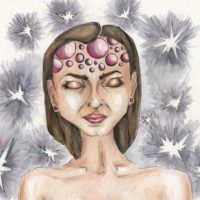
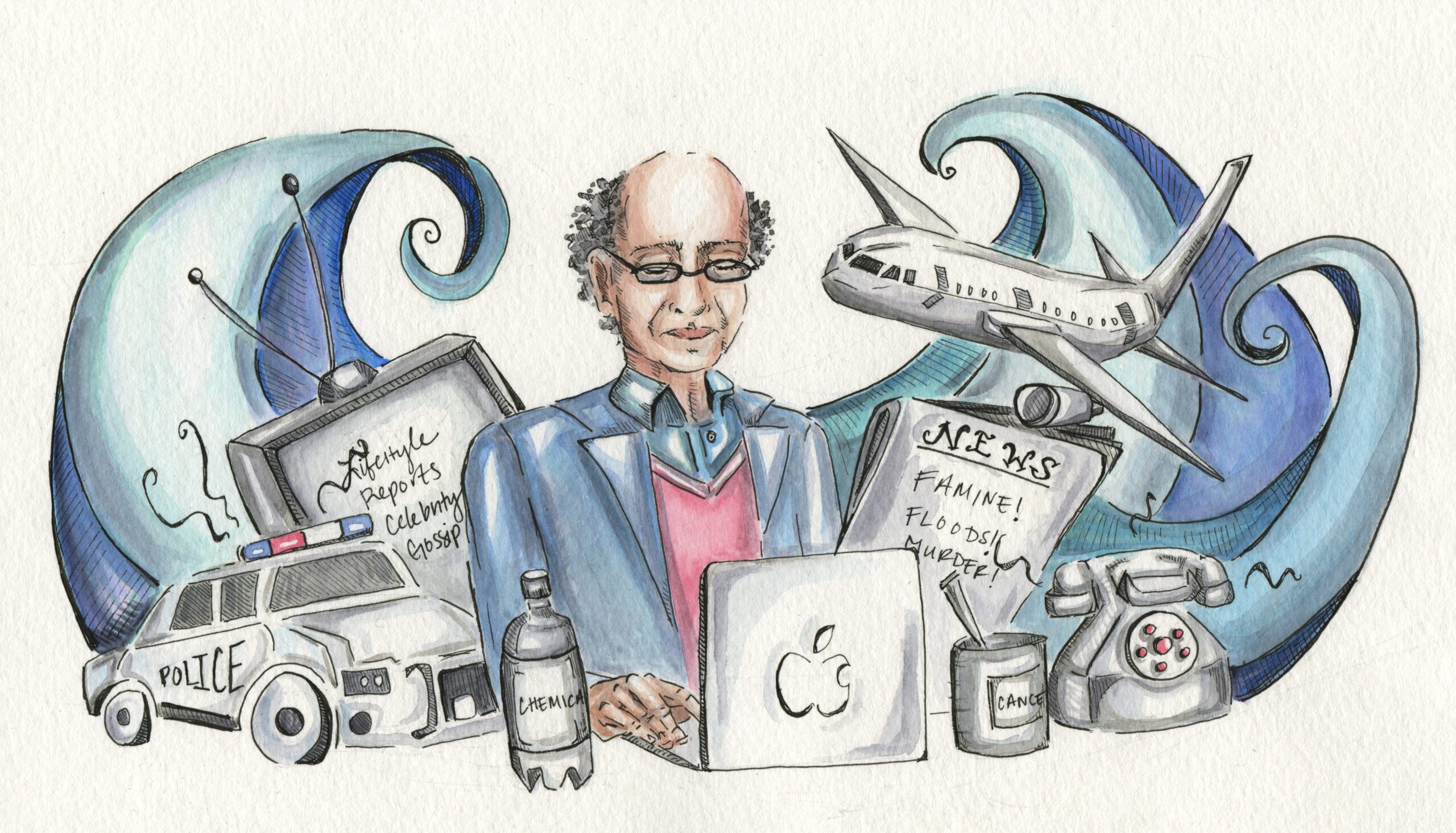
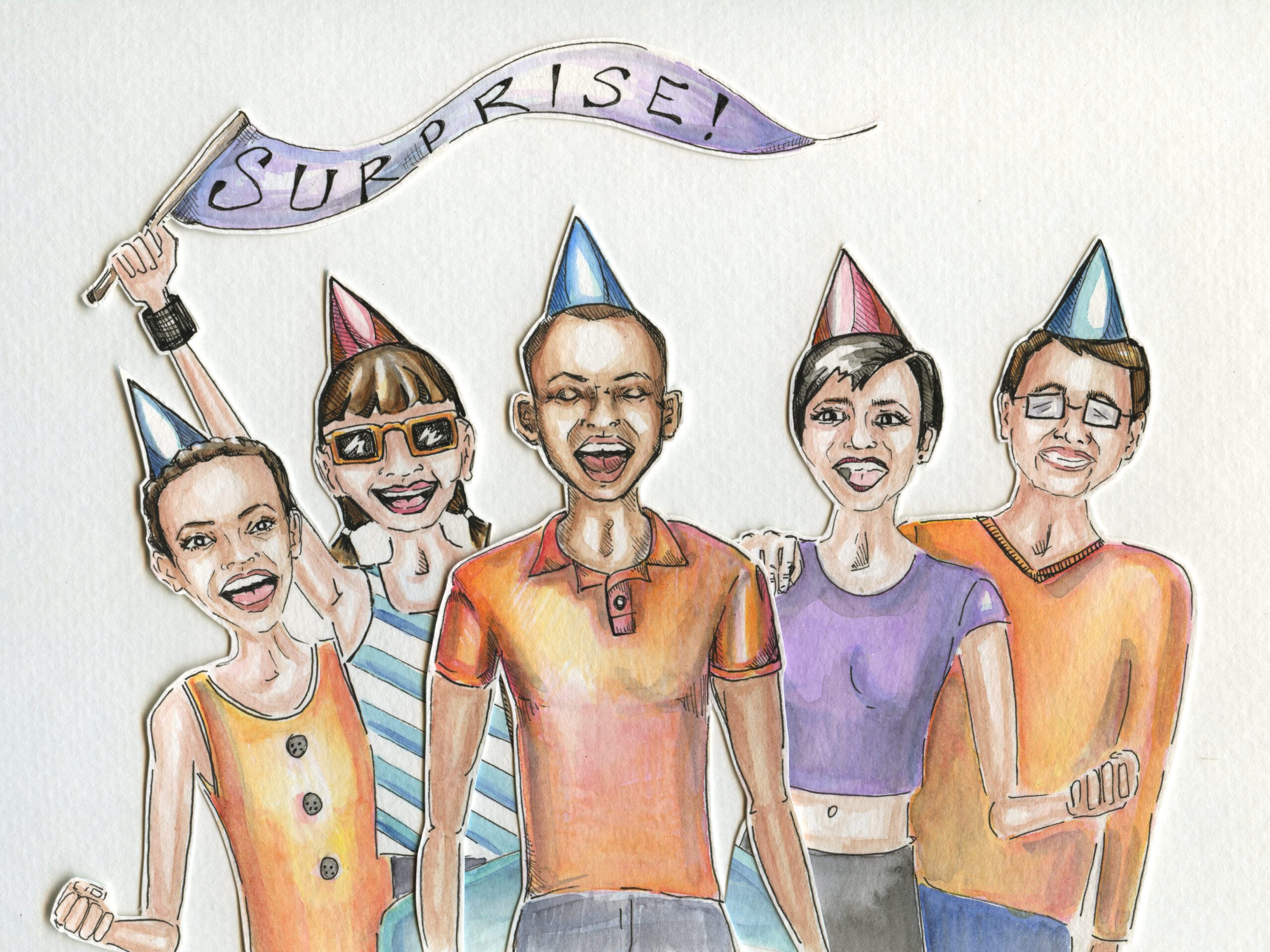
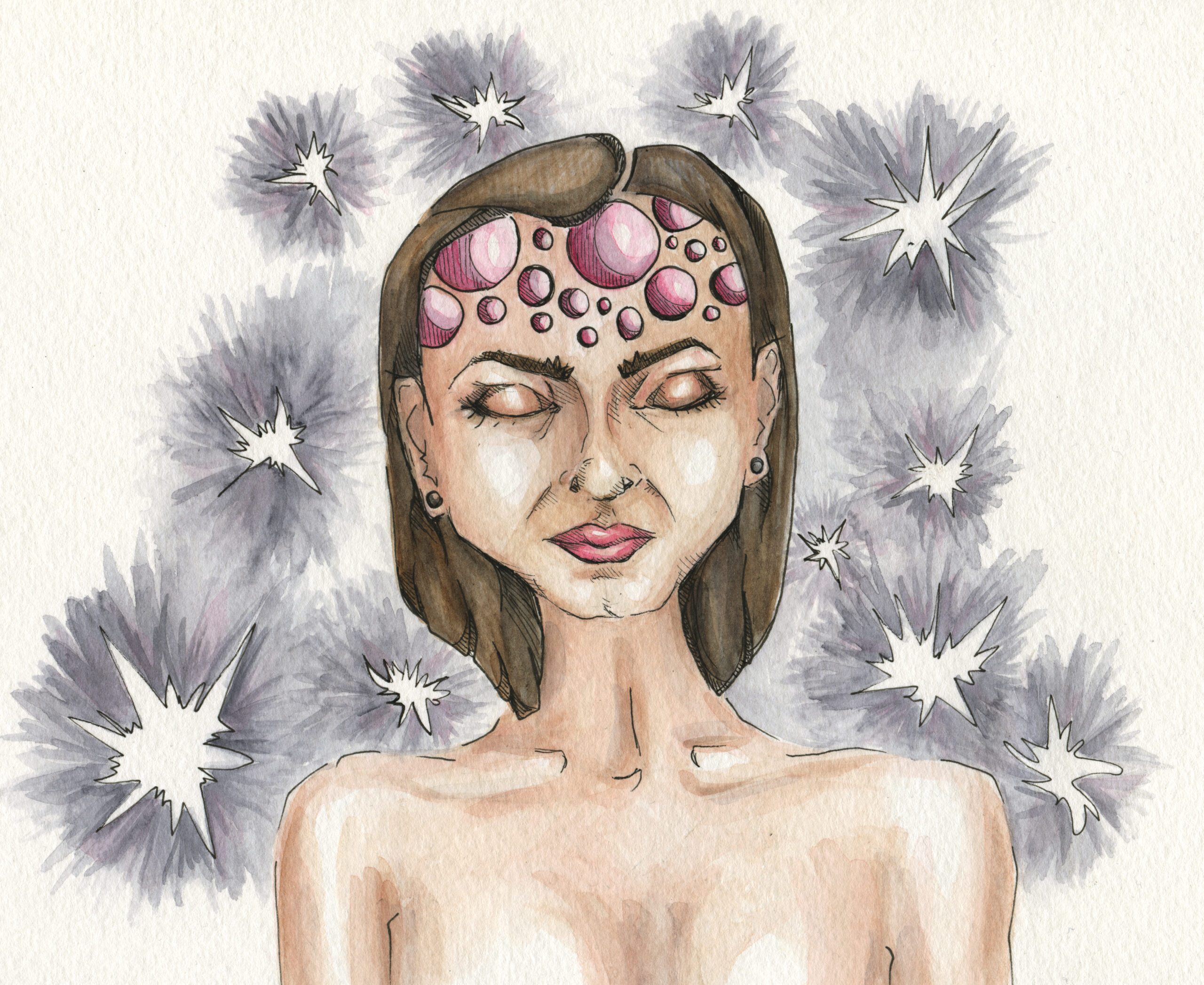
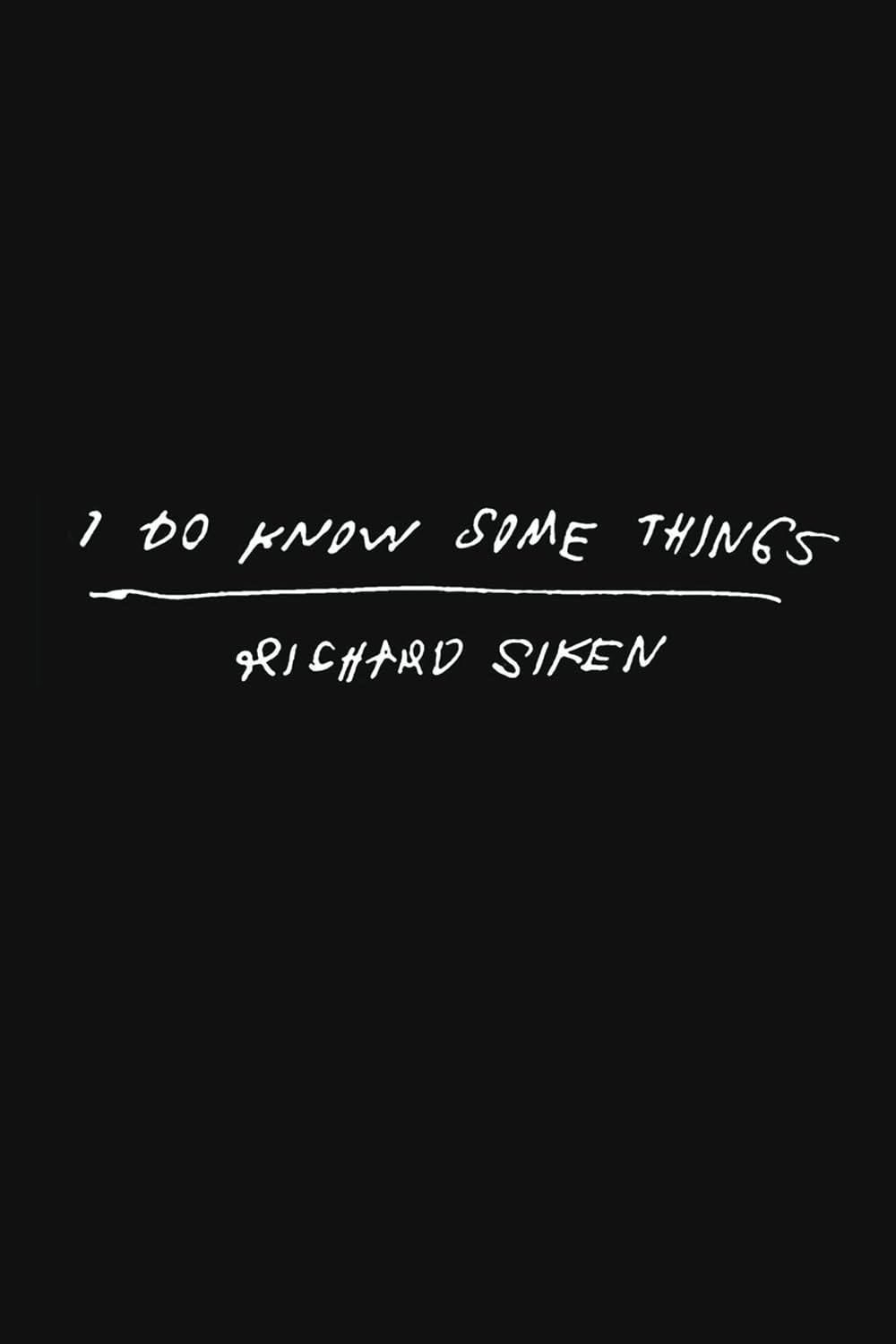



3 responses
Oh, this is so fine. Expressing the inexpressible.
It was especially good to read on one of the more futile MECFS days.
Thank you for writing about this experience. I can definitely relate. The language around mental illness (even saying “mental illness”…) makes me feel alienated from my friends and community. I’d love to reach out to somebody when I need to, but ever since mental health has become a hot topic, particularly depression and anxiety, I feel like my experience is diminished, simplified, too common of a problem to be worth mentioning.
Sarah, thank you for putting your struggle into words. I have also felt alienated and underestimated whenever metaphors were present to explain my symptoms, especially when the world outside my head was in disagreement with my experiences. I will be sharing your writing, I hope you are having some peace.
Click here to subscribe today and leave your comment.